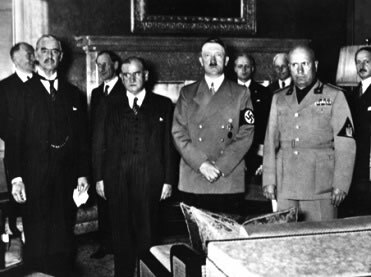THE Battle of Berlin, fought in April 1945, was the final confrontation of the European war scene during the Second World War. This city was the scene of a bloody battle, in which 2.5 million Soviet soldiers surrounded and conquered the last major focus of German resistance. The conquest of the German capital led to the end of the war in Europe with the surrender of the Nazis.
Background
1945 was a tragic year for Germans, as more Germans died in the war in the first four months of the year alone than in the entire period of 1942 and 1943.|1|. The Germans had suffered heavy defeats on all possible fronts: in January and February they had suffered heavy defeats in the ardennes is on Budapest, and the country was constantly bombed by the Allies.
The decline of Germany in the war was directly related to the weakening of the economy, which was accentuated by the failure of the invasion of the Soviet Union from June 1941. This occupation played a vital economic role for Germany, which sought to obtain the sources of resources from the Soviets to keep the German economy afloat during the war.
The failure to dominate the Soviet Union resulted in the depletion of the German economy, which could not withstand the effort necessary for the struggle to be maintained at a high level. Thus, from 1942, during the Battle of Stalingrad, the Germans suffered a heavy defeat to the Soviets.
The German decline became noticeable with the accumulation of failures in the period 1943-1944:
Defeat for the Soviets in Kursk in 1943;
Defeat in North Africa and Allied landing in Sicily in 1943;
Allied landing in Normandy in 1944.
In 1945, a prelude to what was awaiting Berlin fell on the city of Budapest: a massive Soviet attack brought mass destruction, looting and rape. The only hope of the Germans was that the city of Berlin would be conquered by the British and Americans (which did not happen).
the conquest of berlin

Ukrainian stamp in honor of Commander Gueorgi Zhukov, who led Soviet troops in the attack on Berlin *
The attack on the city of Berlin was the final phase of the Soviet offensive against the Nazis and mobilized more than 2.5 million soldiers, aided by 6,250 armored vehicles and 7,500 aircraft|2|. This attack was personally planned by the Soviet leader, Joseph Stalin, and executed by the commanders Konev and Zhukov.
The offensive against Berlin began on April 16, 1945, when the Soviets advanced against the German defense positions installed in the Seelow hills (outskirts of Berlin). The Soviet attack against Seelow launched against the Germans, on the first day alone, an unbelievable amount of 1,236,000 bombs|3|.
Do not stop now... There's more after the advertising ;)
The mobilization of so many resources for the capture of the German capital was evidence of the high priority given to this mission by Stalin. The Soviet leader's obsession with Berlin may be related to a desire to wreak personal revenge on the Germans, who wreaked so much havoc in the Soviet Union. However, Stalin was also interested in gaining access to secret information from German scientists about the production of atomic weapons.
Civilians who failed to flee Berlin in time (or were unable to) stockpiled as much supplies as possible and took shelter in cellars to protect themselves from heavy Soviet bombardment. In addition to the ordinary population, many Nazi Party leaders fled the city while there was time and suggested that their leader, Hitler, do the same. He, however, refused to flee Berlin.
As soon as the Soviets entered the streets of Berlin, an intense fight broke out that vied for control of every street and block. The resistance role of the Germans was entrusted to troops composed, in general, of children and the elderly, which evidenced the German decline and the lack of soldiers to fight at the end of the war.
Hitler's Suicide and the Fall of Nazism
The Soviet victory in Berlin started a series of attacks against the Berlin population. Highlights go to the mass looting, which was carried out throughout the city, and the rapes committed by Soviet soldiers. It was estimated, at the time, that 95 to 130 thousand women were raped (some repeatedly) and, of these, about 10 thousand died as a result of this type of violence|4|.
Hitler spent the last days of his life hidden in his underground shelter, which was about 300 meters from the German parliament. He stayed this time with part of his dome and with his wife Eva Hitler. The two committed suicide on April 30, 1945, just after the Soviets conquered the parliament building (Reichstag). hitler shot his head and Eva took hydrocyanic acid.
With the city of Berlin conquered and Hitler dead, power was handed over to Karl Donitz, who tried to sign the surrender of Germany on May 2, 1945. The attack on Berlin cost them about 100,000 dead to the Soviets. For the Nazis, the defeat represented the occupation of Germany by the Allies, who began the hunt against the Nazi leaders to try them for crimes against humanity, related, above all, to the Holocaust.
|1| HASTINGS, Max, Hell; the world at war 1939-1945. Rio de Janeirp: Intrinsic, 2012, p. 636.
|2| Idem, p. 643.
|3| BEEVOR, Antony. The Second World War. Rio de Janeiro: Record, 2015, p. 817.
|4| Idem, p. 831.
*Image credits: Amateur007 and Shutterstock
By Daniel Neves
Graduated in History


